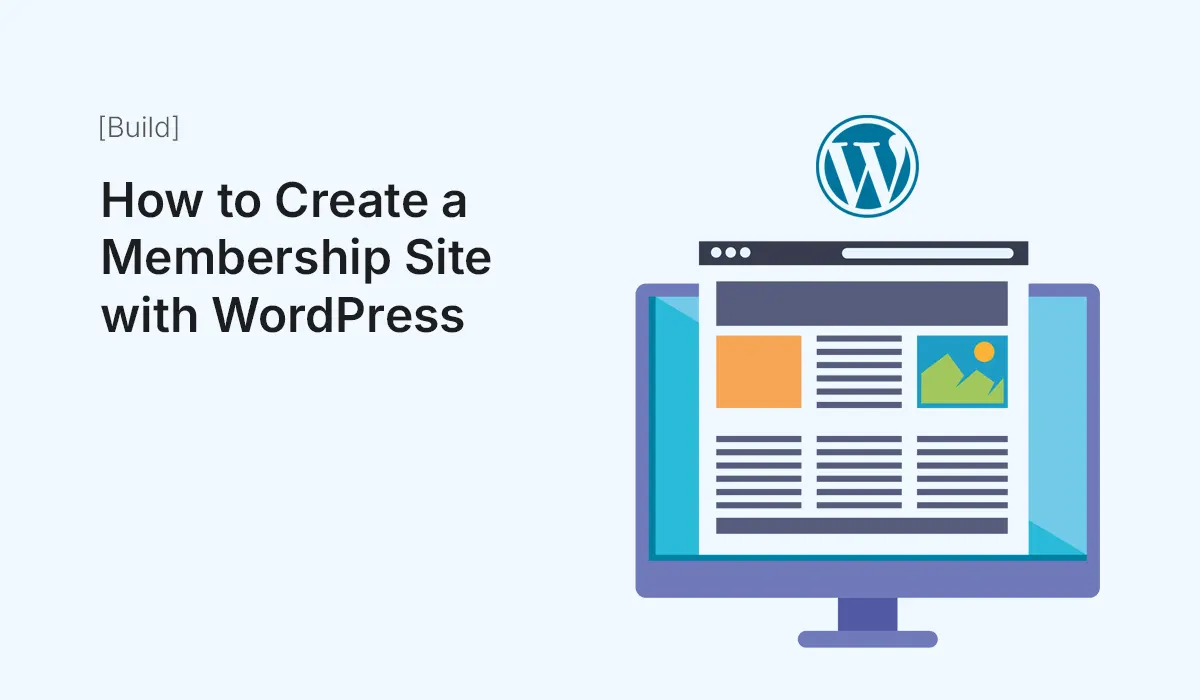The internet has transformed the way people learn, connect, and build communities. One of the most popular ways to monetize knowledge or create exclusive spaces is through a membership site. With WordPress, you can easily create one without needing to be a coding expert.
In this guide, we’ll walk you through how to create a membership site with WordPress, from planning your content to choosing plugins, setting up payment gateways, and managing members.
What is a Membership Site?
A membership site is a website where users pay (or sometimes sign up for free) to access exclusive content, courses, downloads, or community features. Examples include:
- Online learning platforms (courses, tutorials, training)
- Community hubs (forums, mastermind groups)
- Subscription content sites (premium blogs, videos, or podcasts)
- Download sites (digital assets, themes, or templates)
With WordPress, creating this type of site is affordable, scalable, and flexible.
Benefits of Building a Membership Site in WordPress
- Recurring Revenue – Memberships bring consistent income.
- Content Protection – Restrict access to only paying members.
- Community Building – Build deeper engagement with your audience.
- Flexibility – Choose between free, one-time, or recurring subscriptions.
- Scalability – Start small and grow into a large platform.
Step 1: Plan Your Membership Site
Before jumping into WordPress, plan out:
- Niche & Purpose – Who is your audience? What do they want?
- Membership Levels – Free vs. paid, one-time payment vs. subscription.
- Content Types – Articles, videos, courses, downloads, or community.
- Monetization Strategy – Monthly fees, lifetime access, or premium upgrades.
Step 2: Choose Hosting & Install WordPress
To run a membership site smoothly, you need reliable hosting. Look for:
- Fast & Secure Hosting – SiteGround, Bluehost, or WP Engine.
- SSL Certificate – Required for secure payments.
- Scalable Plans – For handling future member growth.
Once you have hosting, install WordPress (most hosts offer 1-click install).
Step 3: Select a Membership Plugin
The heart of your site will be a membership plugin. Some of the best options include:
- MemberPress – Beginner-friendly, powerful, and supports courses.
- Restrict Content Pro – Great for content-based membership sites.
- Paid Memberships Pro – Offers free and premium features.
- LearnDash – Perfect if you want to sell online courses.
- WooCommerce Memberships – Ideal if you already use WooCommerce.
Choose based on your goals. For example, MemberPress works great for all-around use, while LearnDash is perfect for e-learning.
Step 4: Configure Membership Levels
After installing your chosen plugin:
- Set up membership tiers (e.g., Free, Pro, Premium).
- Define access rules – What content belongs to each level.
- Customize registration forms – Collect the right information from users.
Step 5: Add Payment Gateways
To monetize your membership site, integrate secure payment gateways. Most plugins support:
- PayPal
- Stripe
- Credit/Debit Cards
- WooCommerce Payments (if using WooCommerce)
Tip: Offer multiple payment options to reduce drop-offs.
Step 6: Create & Protect Content
Now it’s time to create your exclusive content:
- Write blog posts or articles.
- Upload videos or podcasts.
- Share downloads (eBooks, templates, digital assets).
- Build courses with lessons and quizzes.
Then, use your plugin’s settings to restrict content so only members can access it.
Step 7: Design Your Membership Site
Your site should look professional and be easy to navigate.
- Choose a theme – Astra, GeneratePress, or Kadence are lightweight and customizable.
- Add member dashboards – A page where users can see their account, subscription, and exclusive content.
- Optimize for mobile – Ensure members can log in and use your site from their phones.
Step 8: Add Community Features (Optional)
If you want members to interact, consider adding:
- Forums (bbPress, BuddyPress, or WPForo).
- Private Groups for discussions.
- Gamification (Badges, points, rewards using plugins like GamiPress).
This increases engagement and reduces churn.
Step 9: Test Everything
Before launching, test your site thoroughly:
- Membership sign-up flow.
- Payment processing.
- Content restrictions.
- Emails and notifications.
- Mobile experience.
Step 10: Launch & Grow Your Membership Site
Once everything is working:
- Promote your site – Use social media, SEO, and email marketing.
- Offer free trials or discounts – Attract early users.
- Collect feedback – Improve based on member suggestions.
- Scale up – Add new content, features, and higher-tier memberships.
Pro Tips for Running a Successful Membership Site
- Deliver consistent value – Members should always feel it’s worth it.
- Engage your audience – Regular updates, emails, or community events.
- Offer exclusive perks – Discounts, early access, or behind-the-scenes content.
- Track analytics – Monitor what content members engage with most.
Final Thoughts
Building a membership site with WordPress is one of the most effective ways to monetize your knowledge, build a loyal audience, and create recurring income. With the right planning, plugins, and content, you can create a sustainable online community.
Start simple, grow gradually, and keep focusing on providing value to your members.
Ready to build your own community? Start today and create a membership site with WordPress that grows with your audience!






